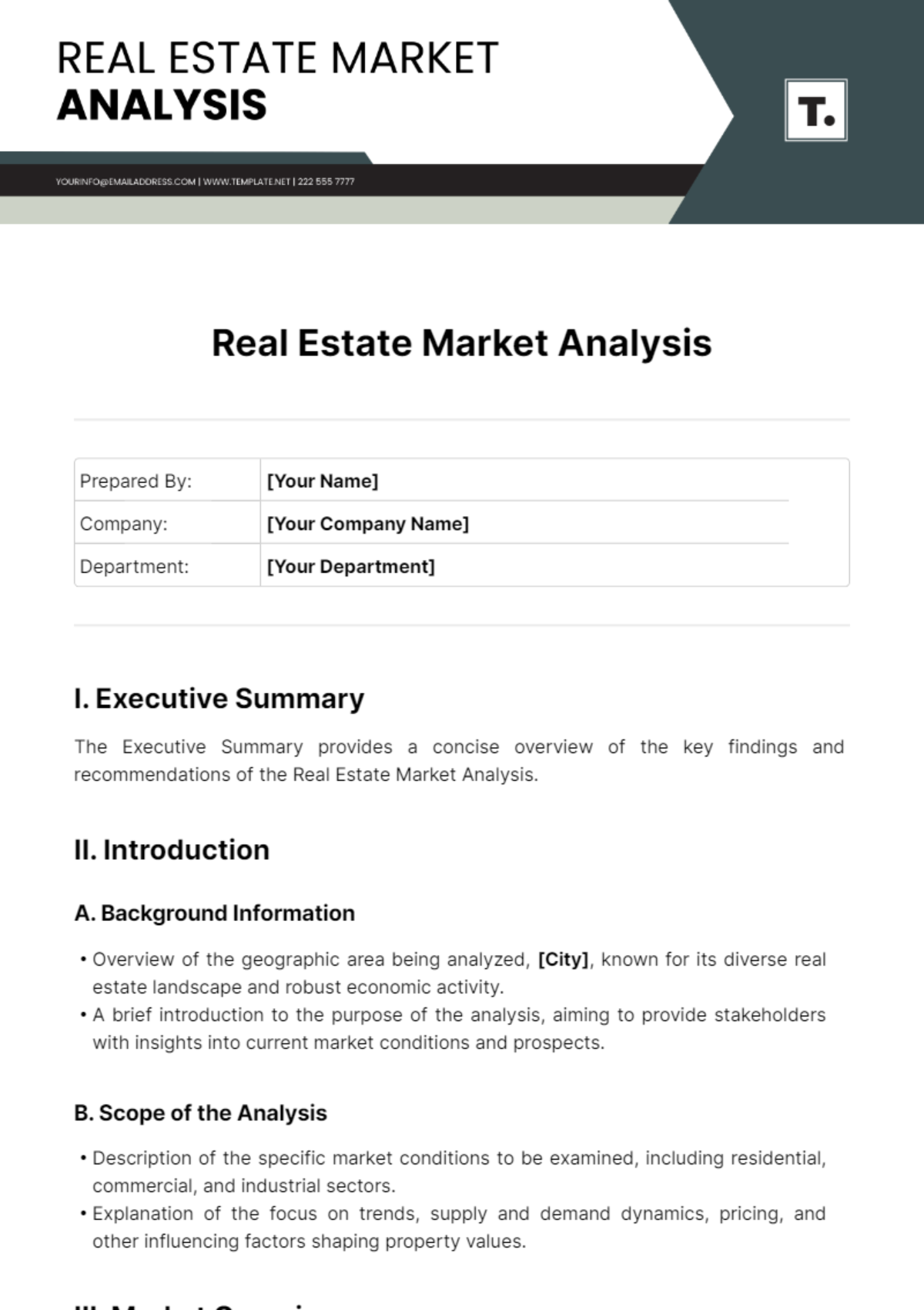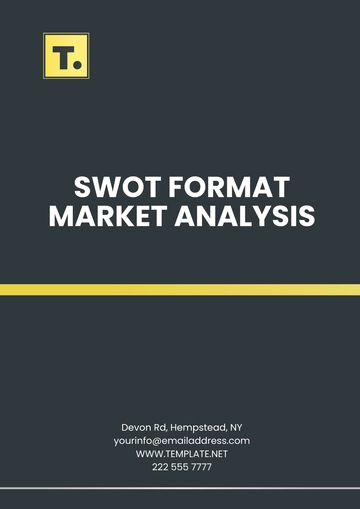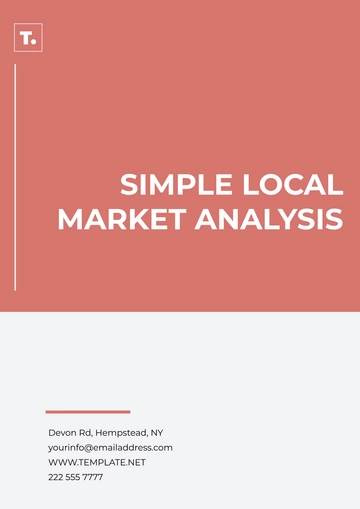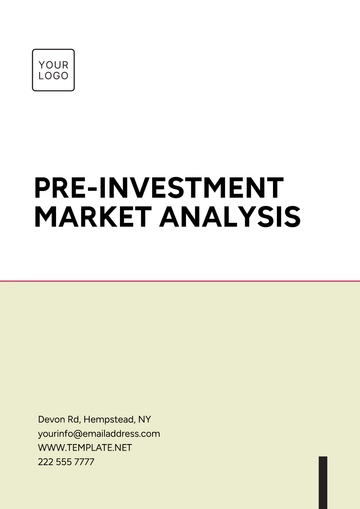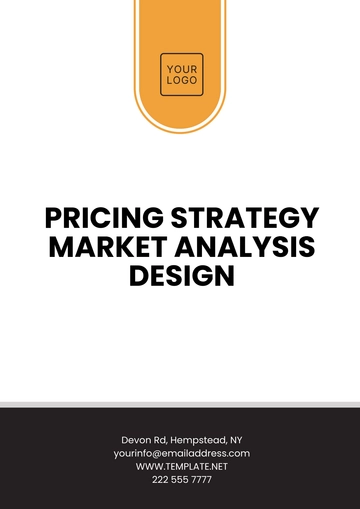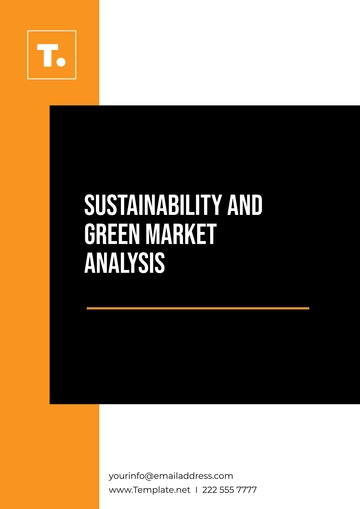Real Estate Market Analysis
Prepared By: | [Your Name] |
Company: | [Your Company Name] |
Department: | [Your Department] |
I. Executive Summary
The Executive Summary provides a concise overview of the key findings and recommendations of the Real Estate Market Analysis.
II. Introduction
A. Background Information
Overview of the geographic area being analyzed, [City], known for its diverse real estate landscape and robust economic activity.
A brief introduction to the purpose of the analysis, aiming to provide stakeholders with insights into current market conditions and prospects.
B. Scope of the Analysis
Description of the specific market conditions to be examined, including residential, commercial, and industrial sectors.
Explanation of the focus on trends, supply and demand dynamics, pricing, and other influencing factors shaping property values.
III. Market Overview
A. Macro-Economic Factors
Examination of economic indicators such as GDP growth, unemployment rates, and inflation, showcasing [City]'s resilience in the face of economic fluctuations.
B. Demographic Trends
Overview of population growth, migration patterns, and demographic shifts, illustrating [City]'s attractiveness to both domestic and international migrants.
IV. Property Inventory
A. Residential Properties
Breakdown of available residential properties by type (e.g., single-family homes, condominiums), indicating a surge in luxury apartment developments in downtown [City].
B. Commercial Properties
Overview of commercial real estate inventory, including office, retail, and industrial spaces, illustrating vacancy rates and lease rates across different submarkets.
Submarket | Vacancy Rate (%) | Lease Rate ($/sq ft) |
|---|
Downtown | 8.5 | $45 |
Business Park | 12.3 | $30 |
Industrial Zone | 5.8 | $8 |
C. Industrial Properties
V. Demand Analysis
A. Factors Driving Demand
Identification of factors such as population growth, job creation, and urbanization, underlining [City]'s attractiveness for businesses and residents alike.
B. Buyer Preferences
Amenity | Percentage of Buyers (%) |
|---|
Swimming Pool | 68 |
Gym/Fitness | 52 |
Green Spaces | 49 |
High-Speed Internet | 85 |
VI. Supply Analysis
A. New Construction
Project Name | Property Type | Location | Expected Completion |
|---|
Skyview Residences | Condominiums | Downtown | Q3 2054 |
Innovation Center | Office Space | Tech District | Q2 2055 |
Logistics Park | Warehouses | Industrial Zone | Q4 2053 |
B. Vacancy Rates
Examination of vacancy rates across different property sectors, comparing vacancy rates between office, retail, and industrial properties.
Property Type | Vacancy Rate (%) |
|---|
Office | 10.2 |
Retail | 7.9 |
Industrial | 4.5 |
VII. Pricing Trends
A. Historical Pricing Data
Year | Median Sales Price ($) |
|---|
2050 | $350,000 |
2051 | $375,000 |
2052 | $390,000 |
2053 | $410,000 |
2054 | $430,000 |
B. Market Comparisons
Suburb | Median Sales Price ($) | Price Differential ($) |
|---|
City X | $430,000 | - |
Suburb A | $380,000 | -$50,000 |
Suburb B | $410,000 | -$20,000 |
VIII. Market Outlook
A. Future Projections
B. Recommendations
Analysis Templates @ Template.net
